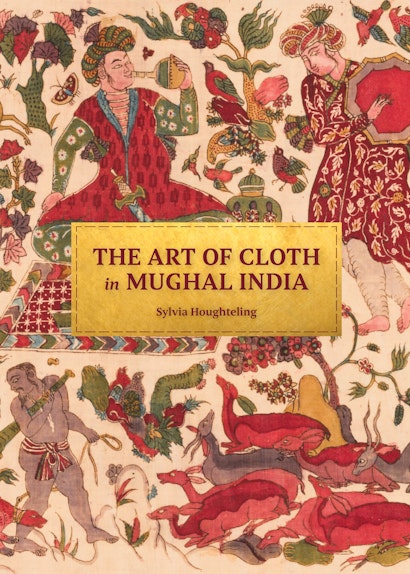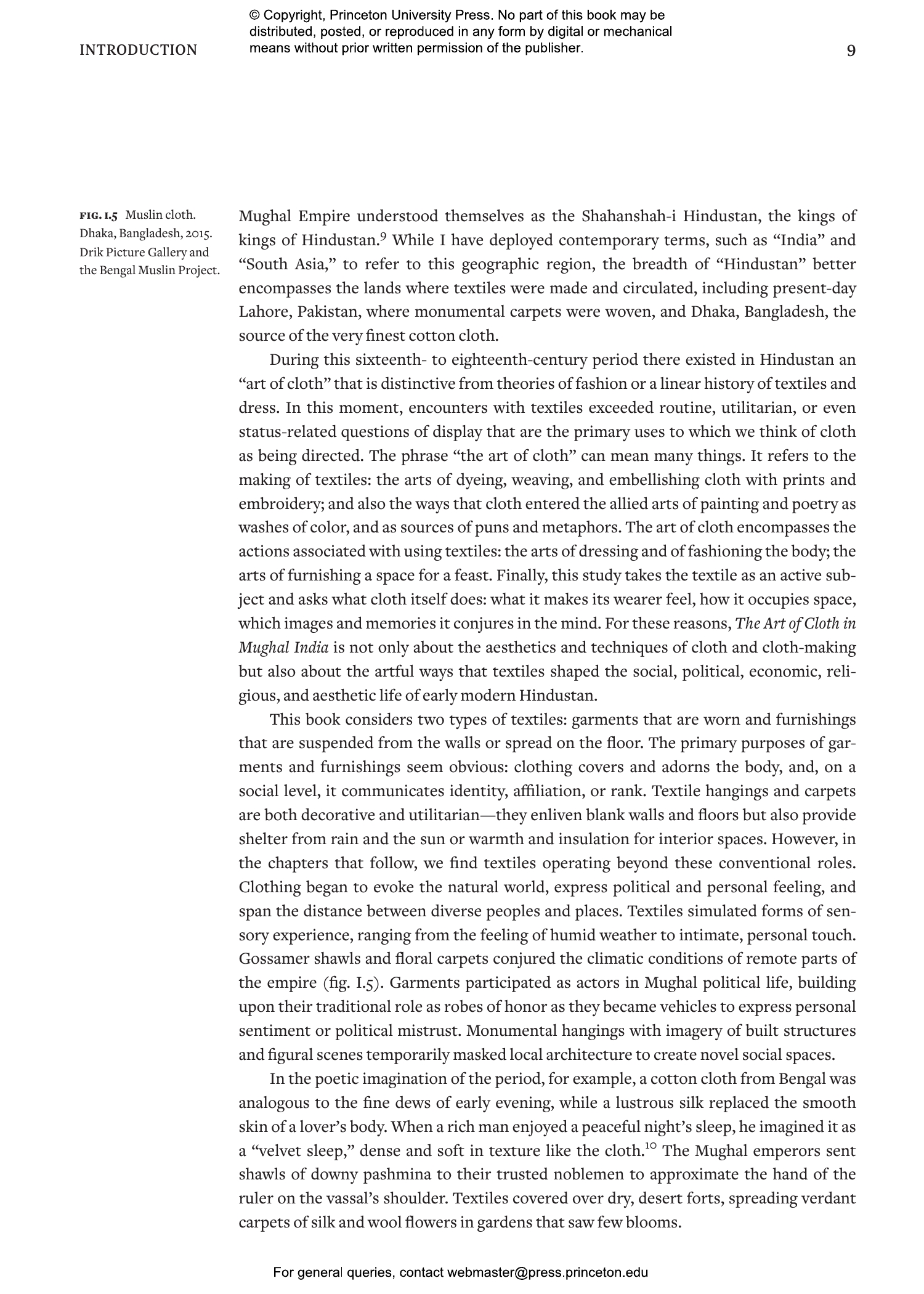In the sixteenth and seventeenth centuries, a vast array of textiles circulated throughout the Mughal Empire. Made from rare fibers and crafted using virtuosic techniques, these exquisite objects animated early modern experience, from the intimate, sensory pleasure of garments to the monumentality of imperial tents. The Art of Cloth in Mughal India tells the story of textiles crafted and collected across South Asia and beyond, illuminating how cloth participated in political negotiations, social conversations, and the shared seasonal rhythms of the year.
Drawing on small-scale paintings, popular poetry, chronicle histories, and royal inventory records, Sylvia Houghteling charts the travels of textiles from the Mughal imperial court to the kingdoms of Rajasthan, the Deccan sultanates, and the British Isles. She shows how the “art of cloth” encompassed both the making of textiles as well as their creative uses. Houghteling asks what cloth made its wearers feel, how it acted in space, and what images and memories it conjured in the mind. She reveals how woven objects began to evoke the natural environment, convey political and personal meaning, and span the distance between faraway people and places.
Beautifully illustrated, The Art of Cloth in Mughal India offers an incomparable account of the aesthetics and techniques of cloth and cloth making and the ways that textiles shaped the social, political, religious, and aesthetic life of early modern South Asia.
Awards and Recognition
- Winner of the Charles Rufus Morey Book Award, College Art Association
- Shortlisted for the R.L. Shep Memorial Book Award, Textile Society of America
- Winner of the R.L. Shep Memorial Book Award, Textile Society of America
Sylvia Houghteling is assistant professor of history of art at Bryn Mawr College.
"[The Art of Cloth in Mughal India] maps a history of a specific art form while offering a multilayered methodological corrective to the field of art history. . . . [This book] is a crucial, multidisciplinary addition to the field that combines art and architectural history with explorations into comparative literature, botany, and the history of trade."—Murad Khan Mumtaz, caa.reviews
"Drawing on a superb range of material . . . Houghteling weaves a lively and comprehensive tale of the production, circulation and sensory experience of textiles during the age of the Great Mughals (155-1700). . . . A remarkable aesthetic sensitivity permeates her erudite research in this superb account of the lives and meanings of Mughal textiles."—Emily Hannam, World of Interiors
"Houghteling compels us to rethink the history and historiography of textiles from the subcontinent through methodological forays that engage recent debates on global/local binaries, ecology and the environment, sensorial histories, artisanal practices, and commodity cultures, among other themes. . . . What emerges from this insightful study . . . is a dazzling social, cultural, political, and aesthetic history of textiles. Lavishly illustrated and exquisitely produced, The Art of Cloth in Mughal India will undoubtedly become a major landmark in the field of early modern art history."—Sugata Ray, West 86th
“This exceptional book fills a major gap that Mughal art history didn’t know it had. Written with sensitivity, erudition, and insight, it brings cloth, and the experience of cloth, to the forefront of Mughal aesthetic culture.”—Kavita Singh, author of Real Birds in Imagined Gardens: Mughal Painting between Persia and Europe
“Houghteling has written a moving account of how cloth touches our skin, our hearts, and our imaginations, and how its touch once wove a social fabric that stretched across the globe. She makes tangible and alive for us the beauty of wondrous techniques, materials, and figurations that are now mostly forgotten along with the cultures that celebrated them.”—Molly Emma Aitken, author of The Intelligence of Tradition in Rajput Court Painting
“Houghteling offers the first comprehensive account of textiles produced during the age of the great imperial Mughals, melding together the economic and aesthetic contexts with tremendous sensitivity. This remarkable book will be of great value to anyone who is attracted to the beauty of Indian cloth.”—Catherine B. Asher, author of Architecture of Mughal India








































